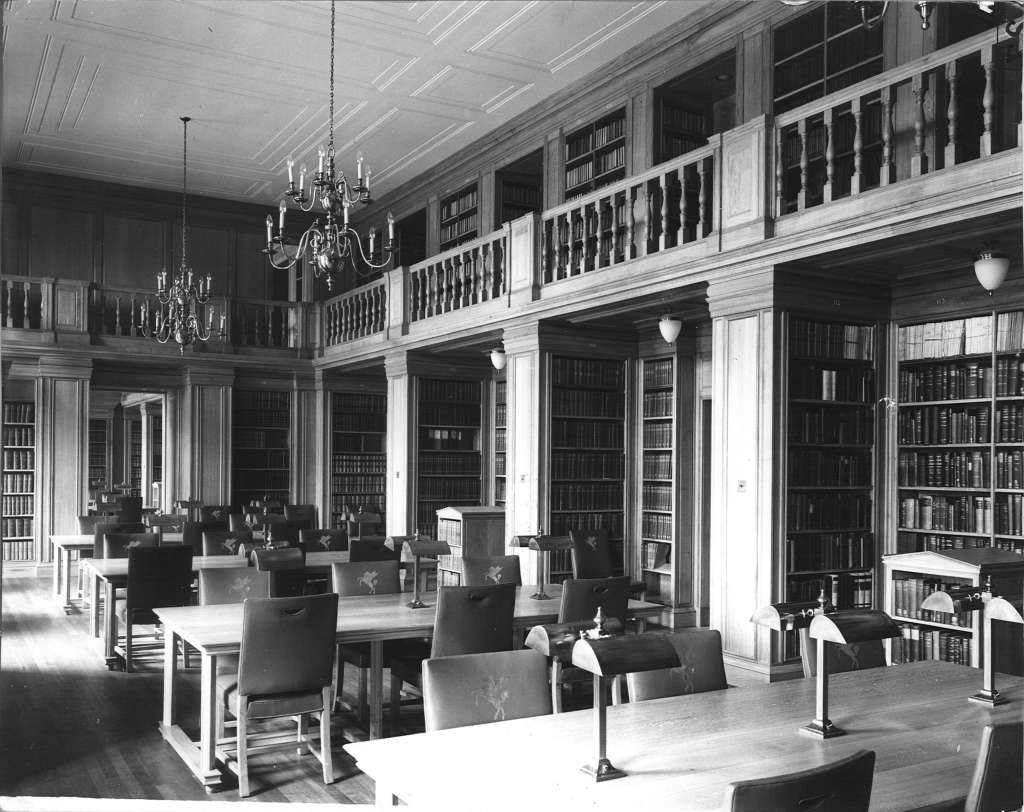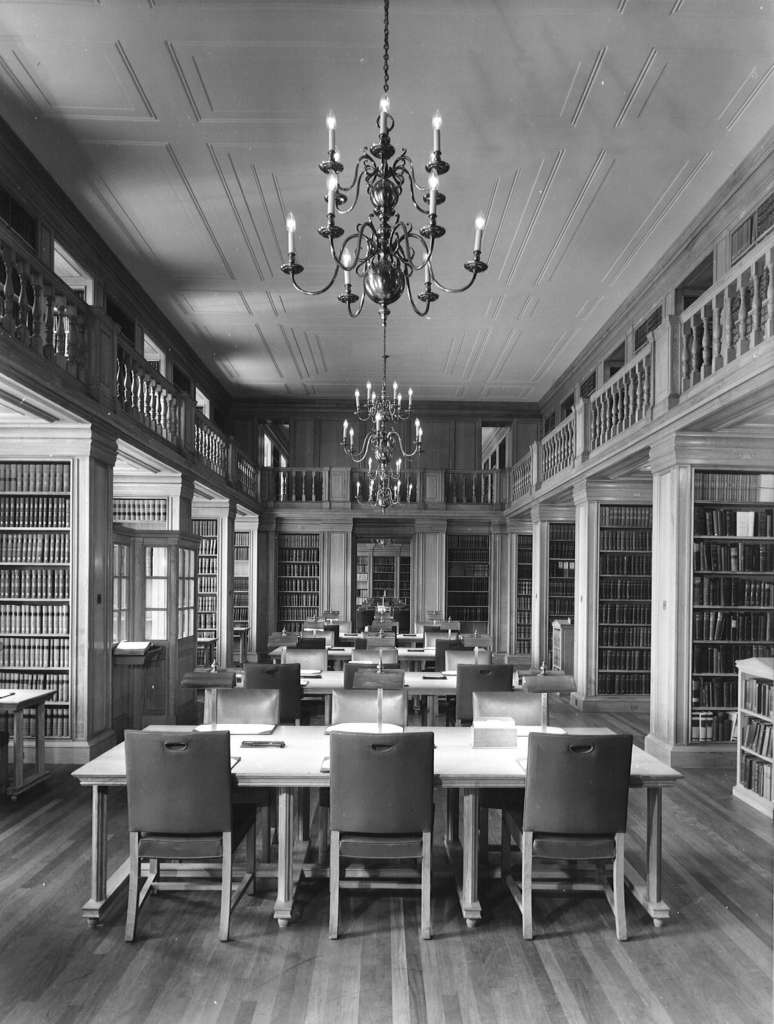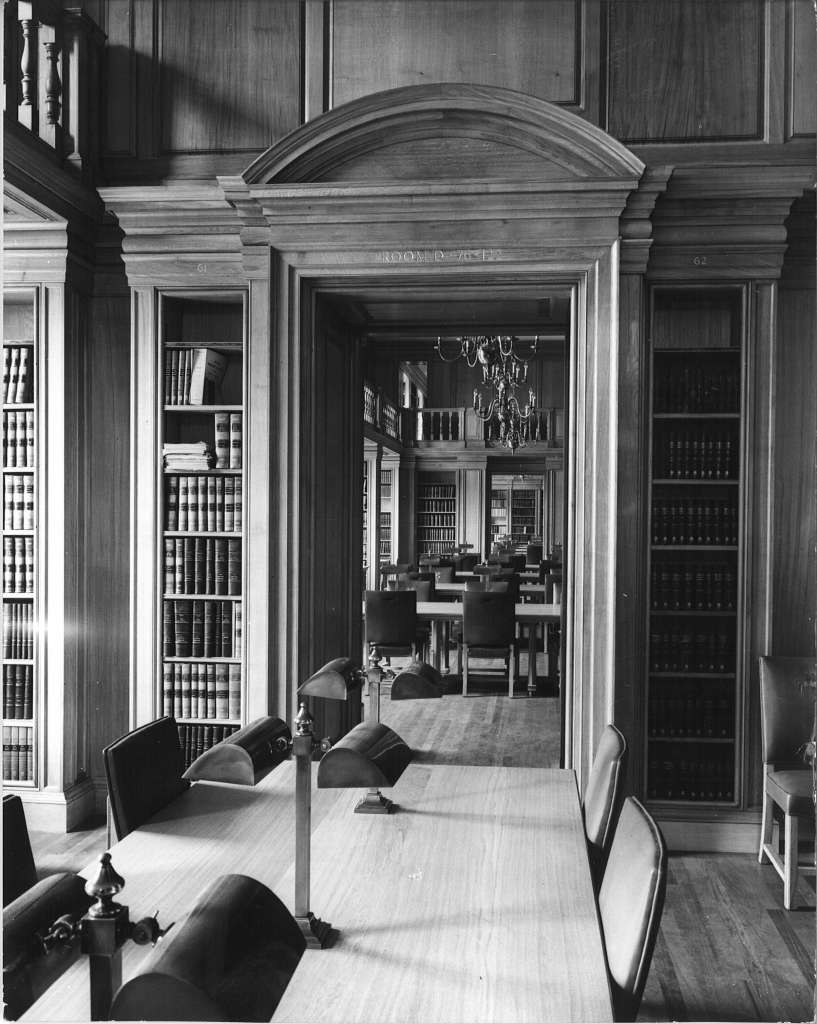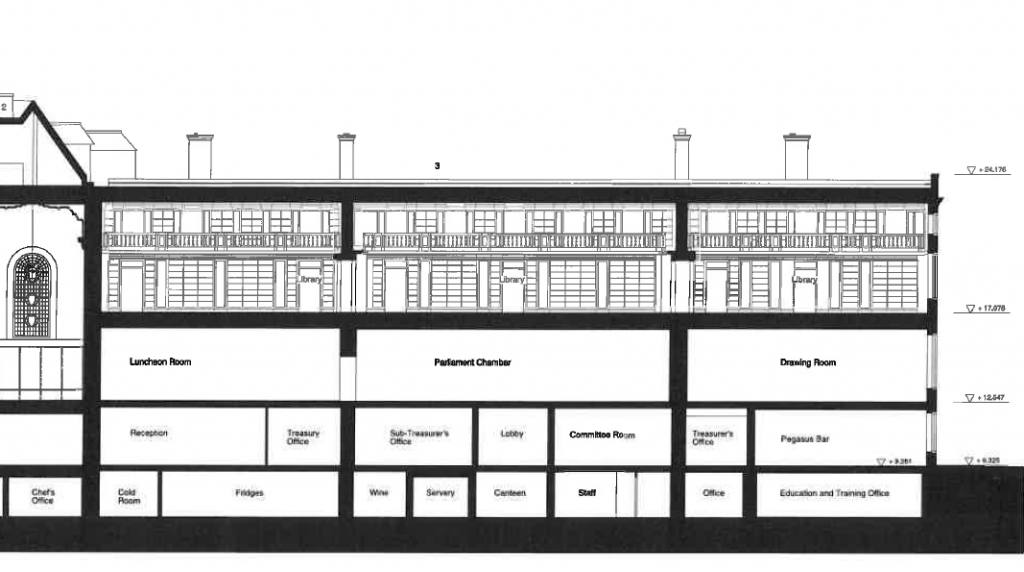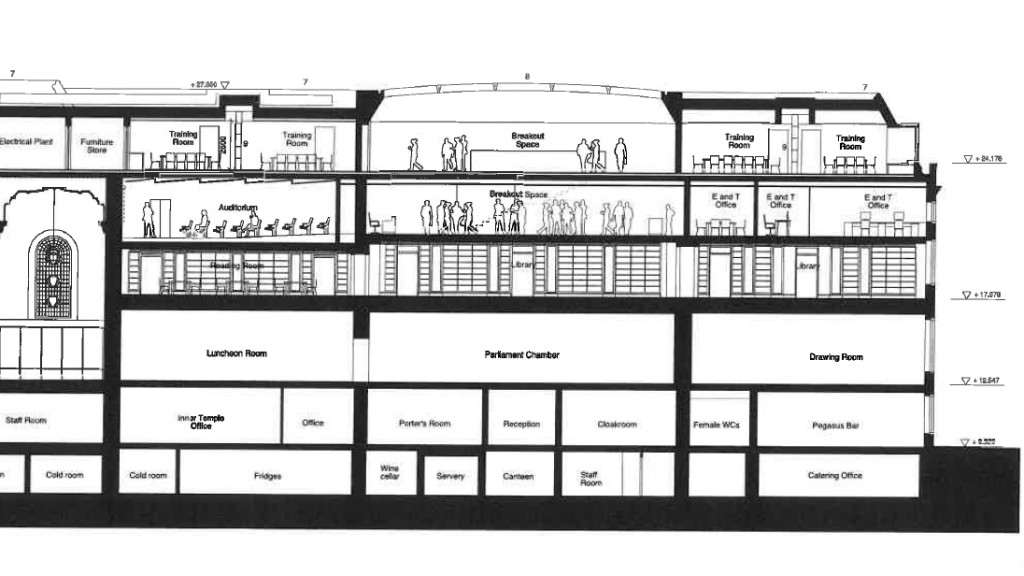SAVE objects to brutal and insensitive plans for the Inner Temple Library
16 March 2017
SAVE objects to brutal and insensitive plans for the Inner Temple Library
SAVE Britain’s Heritage has submitted major objections to proposals that would gut and drastically alter a historic library in the City of London.
The Inner Temple Library is a series of beautiful double-height rooms, with upper galleries, oak panelling, pedimented doorways and brass candelabras, rebuilt with great care in the 1950s.
The plans to squeeze in a lecture theatre would see the handsome two-storey rooms of the Library truncated, with a new low ceiling inserted destroying the symmetry of the spaces, and the high-quality woodwork and fittings stripped out, including the classical balustrades around the galleries.
What is currently a light filled welcoming series of rooms with ample study spaces, would be transformed into a darker, oppressive single storey room.
Marcus Binney, Executive President of SAVE said: “This handsome library beautifully panelled in oak, has a wealth of fine architectural detail. It is unbelievable that one of the historic Inns of Court should be proposing to butcher its own heritage in this brutal and insensitive fashion.”
Objections have also been submitted by the Inner Temple’s Library Users Group who place great value on the existing Library’s architectural quality, as well as leading law practitioners including Sir Richard Buxton, Sir Stephen Sedley, and the Rt Hon Lord Lloyd of Berwick.
The application is expected to be determined by the City of London in May 2017. Letters of objection should be sent to plans@cityoflondon.gov.uk, quoting planning reference 17/00077/FULMAJ.
The Library
The Inner Temple building was rebuilt following wartime bomb damage, and is the work of T W Sutcliffe, supervised by Sir Edward Maufe, architect of Guildford Cathedral. It officially reopened in 1958.
With great care and attention to detail Sutcliffe produced a sequence of three oak panelled rooms, the largest at the centre, with matching extensions at either end. It is considered one of London’s finest examples of sensitive postwar reconstruction.
All the rooms survive in blemishless condition and are of a piece, beautifully executed in oak with floors of polished mahogany, with pedimented doorways, brass candelabra, and an interconnected series of galleries above.
Upon opening, 'Country Life' described it as, ‘carefully planned,’ and, ‘extremely dignified, but never pretentious or pompous’. The rebuilding and restoration of Temple also drew praise from architectural critic Ian Nairn in his 1966 'Nairn’s London'.
Note to editors:
1. For more information please contact SAVE on 0207 253 3500 or office@savebritainsheritage.org
2. SAVE Britain’s Heritage has been campaigning for historic buildings since its formation in 1975 by a group of architectural historians, writers, journalists and planners. It is a strong, independent voice in conservation, free to respond rapidly to emergencies and to speak out loud for the historic built environment.Press release issued by SAVE Britain’s Heritage

